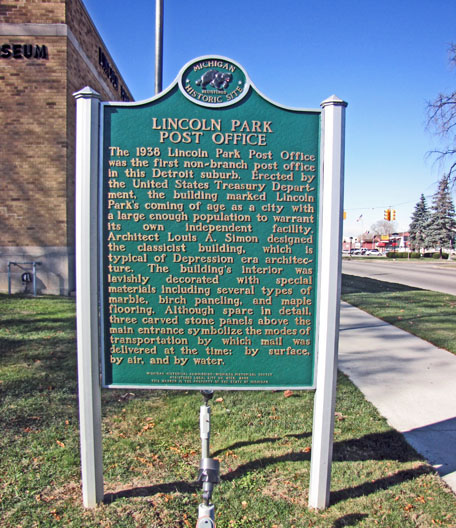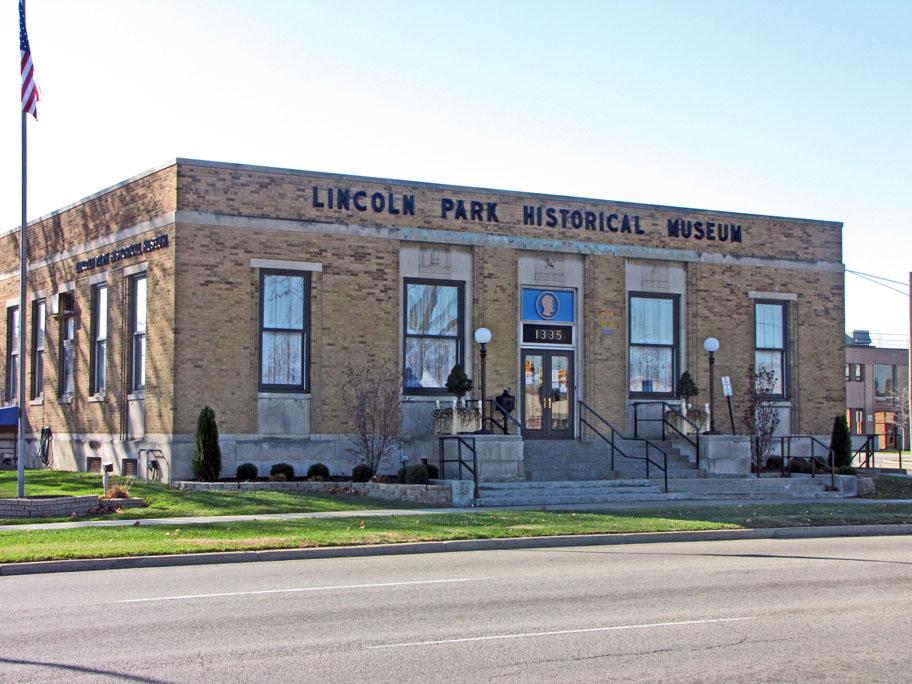

Michigan suffered greatly during the first decade of this new century. The number of jobs in the state exceeded 4.7 million in 2000, but then dropped to 3.8 after the Great Recession of 2008 changed the economic landscape. By the end of 2013, the number of jobs had slowly climbed back to 4.1 million. In constant 2012 dollars, back in 2000 per capita income for adults in Michigan was $41,100. By 2012, it had fallen 22 percent to $31,900.
As serious as this Great Recession has been for Michigan, it pales in comparison to the unemployment and economic devastation that characterized the state in the Depression decade. Social values and political policies were much different in the 1930s from what they are today. Many believed that the federal government could and should help resolve the economic crisis by spending heavily for much needed buildings and services.
 The attractive building pictured here is one consequence of the 1930s economic stimulus program. Throughout Michigan, there are beautiful post offices and federal buildings that
employed architects, contractors and construction workers during the nation’s most economically troubled decade. I am a little surprised that no one has written a book showing the beautiful buildings that the federal government constructed in this state during the Depression years.
The attractive building pictured here is one consequence of the 1930s economic stimulus program. Throughout Michigan, there are beautiful post offices and federal buildings that
employed architects, contractors and construction workers during the nation’s most economically troubled decade. I am a little surprised that no one has written a book showing the beautiful buildings that the federal government constructed in this state during the Depression years.
This post office was designed by Louis A. Simon. Educated at the Massachusetts Institute of Technology, Simon began practicing architecture in Baltimore in 1894. By 1896 he was working for or collaborating with the Office of the Supervising Architect in the United States Department of the Treasury. By the 1930s, he had risen through the ranks and was responsible for many of the buildings constructed by that federal department. I infer that their Supervising Architect was responsible for many new post offices. The building you see here has some classical elements. The Works Projects Administration had a focus upon supporting artists and crafts persons. Above the doors you will see a stone carving showing three ways that the Post Office moved mail: by ship, by train or by plane. I do not know who did that carving. When the Depression-era federal buildings were designed, an artist was often commissioned to paint an appropriate mural for the lobby. The one in this building, “Hauling the Nets” was done by Zoltan Sepeshy and reminded its viewers of the fishing that once occurred in this area. This mural was removed and transferred to the Marine Museum on Beaver Island.
The Lincoln Park Historical Museum was founded in 1972 and occupied space in the Lincoln Park Public Library. In 1988, they moved into the former District Court building and then, in 1992, into the structure pictured on this page. Apparently, they have extensive information about the first Europeans—primarily French persons—who settled the area now included in Lincoln Park and Ecorse.
The area that is now Lincoln Park was governed by Ecorse Township for a very long period of time. Apparently there were small farms in this area. The Downriver suburbs grew as the Detroit-Toledo corridor developed as a manufacturing area toward the end of the Nineteenth Century. Developers realized that farm land could be converted to residential purposes. They began to lay out current Lincoln Park in 1906 and applied the name Lincoln to several of their endeavors. The population of this area was sufficiently large that a village was established in 1921. Four years later, Lincoln Park became a city and it is now the 31st largest city in the state. The population of Lincoln Park reached a peak in the 1970s and in the thirty-year span from 1980 to 2010, it fell from 45,100 to 38,100—a drop of 15 percent. The decline would have been sharper had not there been an in-migration of Hispanics. In the 2010 Census, about one Lincoln Park resident in 6 identified himself or herself as Spanish in origin. For the state of Michigan, it was one in 25.
Date of Construction: 1938
Architect: Louis A. Simon
Architectural style: Some classical elements
Use in 2014: Lincoln Park Historical Museum
Website: http://www.lincolnpark.govoffice.com/index.asp?SEC=A5DAA3F6-C44A-4BD9-9135-12DB898953E7&Type=B_BASIC
State of Michigan Registry of Historic Sites: Listed
State of Michigan Historical Marker: Erected directly in front of building
Picture: Ren Farley
Description prepared: January, 2014
Return to Government Buildings
Return to Entertainment and Culture
Return to Homepage